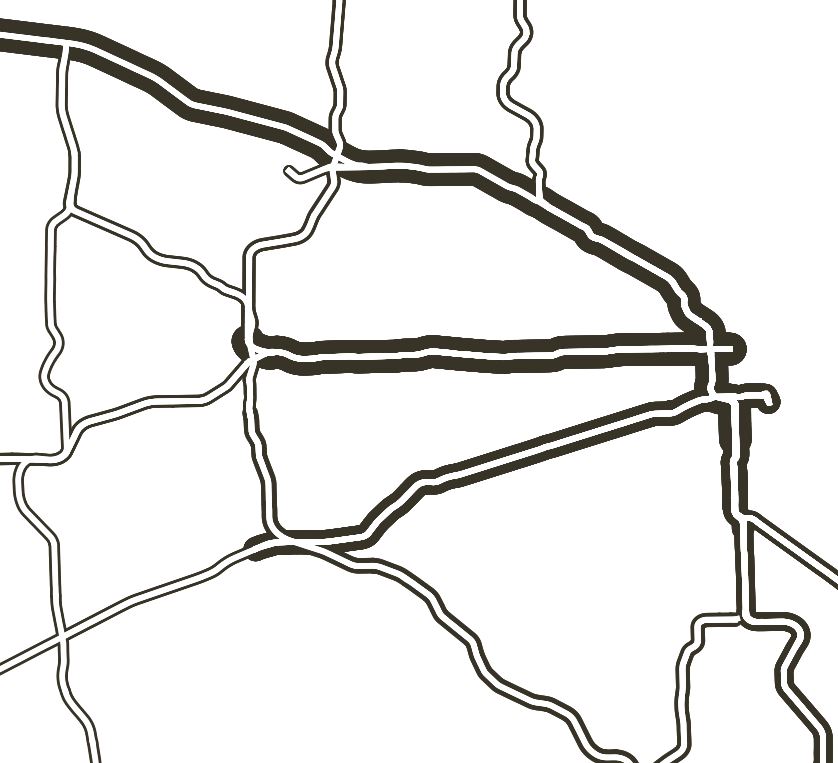I have a number of bus routes, which for certain parts of their length share the exact same geometry and therefore appear as only a single line. Can I style those parts or segments of the lines that overlap exactly other lines?
Conceptually it is similar to the "rule-based" render for points that overlap. So, for example, a segment that shared its geometry with 3 others might have a lineweight of 3x, a segment overlapping with 2 a lineweight of 2x, a line by itself a lineweight of x.
NB: I don't want to actually offset the lines or use transparency. Nor can I fudge it — this is a city-wide dataset, so it cannot be done manually. I want to assign a variable stroke weight based on the geometry that overlaps.


explode lines, then set the line width toequaling_geom_count('Exploded'). If not, you should look into virtual layers.